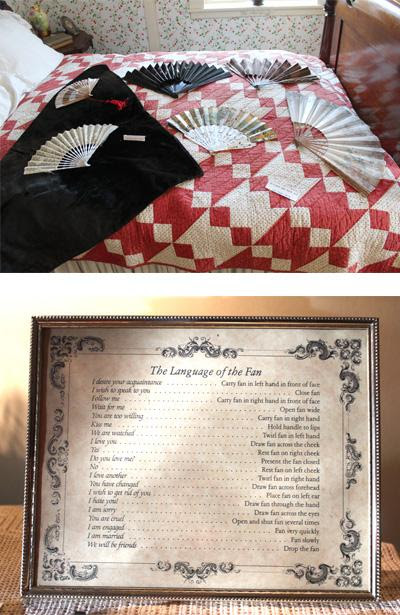Posted on February 17, 2019 at 2:16 PM by Jill O'Brien
Visitors learn about the language of the fan
During the My [Victorian] Valentine event at the Farm House Museum last week celebrating Valentine's Day, guests indulged in chocolates, received carnations and learned about courting during the Victorian era, from elaborate flower bouquets to calling cards to fans.
 The Language of the Fan
The Language of the Fan
While the 'secret language of the fan' proved to be more of a marketing tool, it led to both a resurgence of fan usage in the Victorian era and a fascination with this particular method of communicating with potential suitors.
While it seemed plausible that women would use their fans to communicate with suitors during the Victorian era, the secret language of the fan was said to consist of more than two dozen gestures, and that a male counterpart would've had a difficult time mastering all of them.
However, Parisian fanmaker Jean-Pierre Duvelleroy sought to decode this secret language, and published a leaflet explaining the secret language associated with fan usage. The leaflet was a success and Duvelleroy later became a fan supplier for Queen Victoria after opening a shop on London's New Bond Street.
The fan also served more functional purposes before and during the Victorian era. Originally developed in ancient China, Egypt and India, fans were used to keep cool and keep away insects, and were used in Europe starting in 1600.
"[My favorite fans are] the advertisement fans," said Dacey Messinger, senior in history and Farm House Museum intern. "Not only did they cool you off when it was hot, but showed you the greatest shopping deals all in one!"
Timeless: Love & Romance in the Victorian Era exhibition will run at the Farm House Museum through through October 31, 2019. The museum is open Monday through Friday from noon to 4 p.m. (when ISU classes are in session.)

